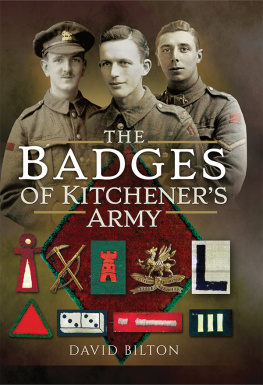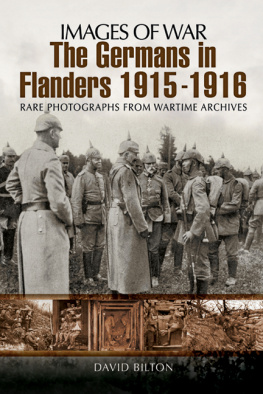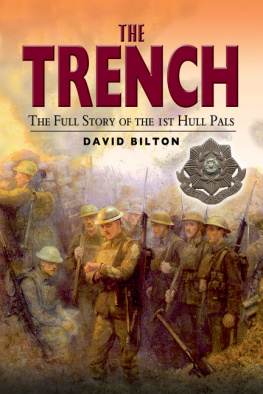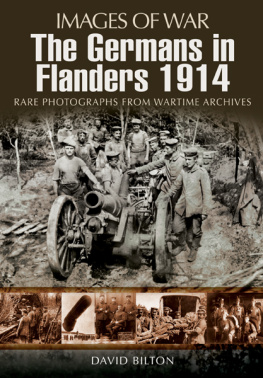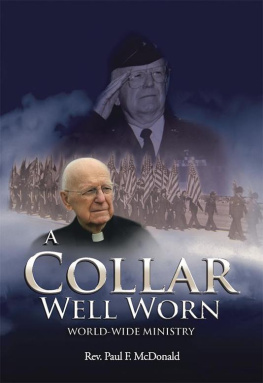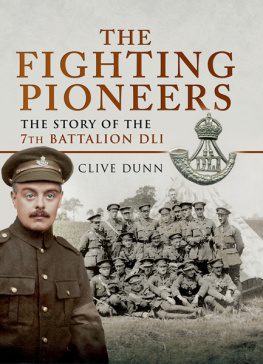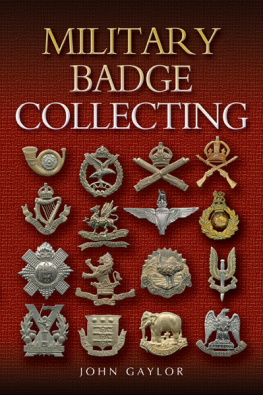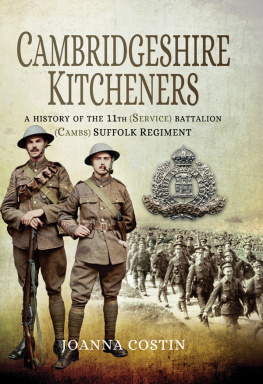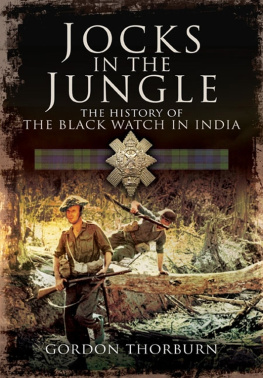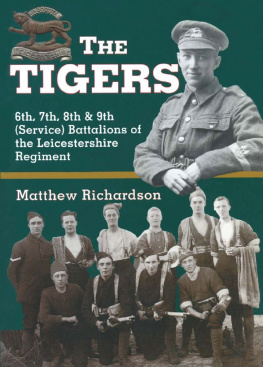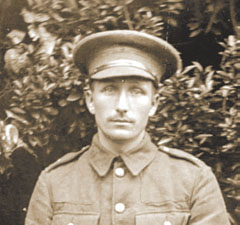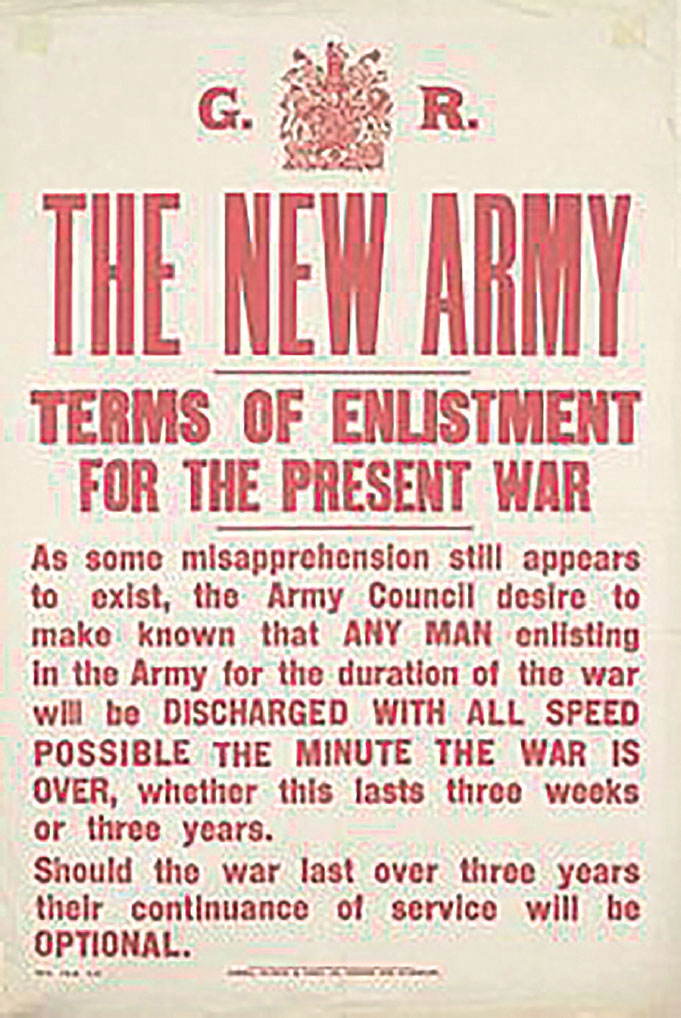Pagebreaks of the print version

The Badges of Kitcheners Army
This book is dedicated to Private Charles Henry Bilton, 10999, 6th East Yorkshire Regiment, an early volunteer, and to the remaining 2,466,718 men who volunteered for the Army between August 1914 and 31 December 1915.
My paternal grandfather, just before he embarked for Gallipoli. Although he would not talk about his experiences, in his late sixties he could still recall every badge worn by the 11th Division, throughout the war.
The Badges of Kitcheners Army
Infantry
David Bilton
First published in Great Britain in 2018 by
Pen & Sword Military
an imprint of
Pen & Sword Books Ltd
47 Church Street
Barnsley
South Yorkshire
S70 2AS
Copyright David Bilton 2018
ISBN 978 1 47383 366 1
eISBN 978 1 47387 353 7
Mobi ISBN 978 1 47387 352 0
The right of David Bilton to be identified as the Author of this Work has been asserted by him in accordance with the Copyright, Designs and Patents Act 1988.
A CIP catalogue record for this book is available from the British Library
All rights reserved. No part of this book may be reproduced or transmitted in any form or by any means, electronic or mechanical including photocopying, recording or by any information storage and retrieval system, without permission from the Publisher in writing.
Pen & Sword Books Limited incorporates the imprints of Atlas, Archaeology, Aviation, Discovery, Family History, Fiction, History, Maritime, Military, Military Classics, Politics, Select, Transport, True Crime, Air World, Frontline Publishing, Leo Cooper, Remember When, Seaforth Publishing, The Praetorian Press, Wharncliffe Local History, Wharncliffe Transport, Wharncliffe True Crime and White Owl.
For a complete list of Pen & Sword titles please contact
PEN & SWORD BOOKS LIMITED
47 Church Street, Barnsley, South Yorkshire, S70 2AS, England
E-mail:
Website: www.pen-and-sword.co.uk
Acknowledgements
There are so many people to thank for assistance with this book that if I leave someone out it is not intentional and I sincerely apologise.
This book would not have been possible without the help and early guidance of Mike Hibberd, a curator at the Imperial War Museum, now retired, who allowed me to examine the extensive collection held by the museum and to read the correspondence collected by the, then, National War Museum in the latter part of the war. This provided the foundations on which to build this book. What is amazing about this correspondence is that in the middle of 3rd Ypres, so many C.O.s and Adjutants found the time to provide so much information.
To many it was important that such a record was kept. Lieutenant Colonel W. Peacock, commanding officer of the 9th Royal Inniskilling Fusiliers wrote on 29 July 1917: I shall be very pleased to give you any further information you require, or to do anything in co-operation with you, to make the Regimental Sections of your Museum a complete and lasting record of the achievements of the Regiment to which I have the honour to belong. Unfortunately not all felt that way and there are many gaps.

1917 envelope used to identify both the date of receipt and what badges had been received.
Following this request, GHQ in France collected the badges and sent them to the museum. These were then catalogued by a museum curator in a standard envelope that might contain a document or a badge or both or more. The front was transcribed with the unit and often further details about the badge.
The badges were supposed to be collected by GHQ but some units sent them directly. On receipt of this order, after having sent the badges, the adjutant of the 8th Royal Sussex wrote to the National War Museum: will you please return those sent, and I will forward them through the Quartermaster general, Adv. G.H.Q., from whence they will be transferred to you at the end of the war. I have included some comments but have not always stated where the information has come from in order to avoid repetition.
Further information came from the many regimental museums across Britain, from the identification pamphlets produced in the 1970s by Major Waring, founder of the Military Heraldry Society and from the many enjoyable hours spent reading through folders, compiled by Haswell-Miller, among others, held by the Ogilvy Trust (now AMOT) that contained much interesting information.
While most of the photographs and some of the badges have come from my own collection, many individual collectors have also provided photos and information. Unfortunately over the intervening years their names have become detached from their help sincere apologies. Three names stand out for their help with the later stages of the project: Alan Jeffreys at the IWM who allowed me to photograph their badge collection (without this assistance the book would have contained far fewer images), Jon Mills, a fellow member of the Military Heraldry Society who contributed many photographs to help highlight badges, and Bob Smethurst who let me photograph his badges and copy his photographs thank you so much.
Many other collectors and libraries happily contributed: Robert Andrews, Tony Ashworth, John Bodsworth, Jerry Bond, Ted Croucher, John Gregory, Paul Hannon, Mark Holden, Martin Kerry, Norman Litchfield, R. J. Marrion, Chris McDonald, Barrie Morris, Graham Stewart, Terry Sampson and the Taylor Library. Further assistance was provided by A. Jackson, T. Scala, T. Chadd, R. Litchfield, G. Tyson, H. Rook, L. Cable and B. Golding. Special thanks to my daughter Esther for help with Photoshop and image manipulation in Word.
As images have been sent to me by many people, far more than listed, some of whom did not want to be acknowledged, I cannot guarantee their original ownership. Keeping track was made even more difficult when my computer died, taking much information with it hence the delay in the book appearing. I apologise beforehand for any inadvertent use of copyright photographs; please forgive such, this will be corrected in the second edition.
What made this research especially interesting was the contact with the men who wore the badges, starting with my grandfather who gave me details of those worn by 11 Division. Then twenty years later after trawling through Whos Who I was able to track down hundreds of old soldiers, men aged 86 to over 100. Not only were the vast majority keen to help but incredibly most could recall their badges, often those of other units as well, one or two still had their badges, one had their complete uniform but interestingly, not one had a photo that showed them wearing the badge. Many were also keen to provide personal stories of their experiences. I have included some of their responses in the text.
It has been a very enjoyable experience. Thank you everyone who has contributed to the most complete collection of information on the badges of Kitcheners infantry.
Introduction
The purpose of this book is to answer many of the who, what, where, and when questions about the badges worn by Kitcheners infantry. While the primary purpose is to provide an historical record, it will also be useful for re-enactors, collectors, family historians and those with an interest in the Great War in general. I have deliberately not included anything other than a brief regimental history of the battalions in order not to detract from the main purpose of this book a record of the badges. The brief history is to put the badges into context.

